Revenue Streams: How Creating a Second Product Line Turbo-Charged My Income
I want to help you build a sustainable, profitable handmade business that makes you consistent income and sales. I only ever teach or recommend marketing, social media, pricing, production and branding tips that I’ve personally used successfully in my own 7-figure handmade businesses.
I'm Mei, from Los Angeles!
Read More
Popular Posts You'll Love
Looking for something?
Categories
starting a business
get more traffic
running a business
make more sales
branding
growing a business
mindset & productivity
podcasts
pricing & money
product photography
reviews
selling on etsy
selling on amazon
social media
selling wholesale
- Facebook56
- Twitter2
- Pinterest645
- 703shares
You’re multi-passionate. You’re crafty.
You can’t seem to keep your creative brain still.
You’re always coming up with brilliant craft ideas for new things to design and make!
So you grab the scissors and take out the sewing machine to create something really awesome.
But you look in your Etsy shop and you’re confused.
Why aren’t you making more Etsy sales?
The secret ingredient you’re missing that no one talks about is revealed here
Read on as Meredith Erin talks about her cautionary yet super inspiring tale of how she and her partner went from $20k in debt to multiple daily sales on Etsy and truckloads of product to ship.
Like many creative entrepreneurs, my husband Matt and I started our first business, Ex-Boyfriend, as a hobby.
We designed things we liked, giving little thought to the “entrepreneur” part of being creative entrepreneurs.
We both had day jobs and didn’t absolutely need income from Ex-Boyfriend to get by.

(Original illustrations we created for our Ex-Boyfriend line)
Fast forward several years later, and Ex-Boyfriend went from being a fun, part-time creative outlet to a full-time job.
Matt and I had come to a bit of stuck point back in 2014.
We’d been growing Ex-Boyfriend steadily. Our growth had necessitated a move to Los Angeles to be closer to our suppliers and manufacturers.
Unfortunately, the move coincided with the shuttering of the print-on-demand shop we’d been relying on to print and ship all our online orders.
Trouble in paradise
We were in a jam.
We just spent tens of thousands of dollars on a cross-country move to grow our business and now had no vendor to rely on to print and ship our web orders.
We searched high and low for a vendor to replace the one we lost, but couldn’t find another printer that took production speed and quality as seriously as we needed them to.
Running out of options, we bit the bullet and bought our own production equipment
It cost us over $20,000.
We needed a way to recoup the investment in new equipment — not to mention the cost of our cross-country move – and it had to be fast!
Ex-Boyfriend was bringing in orders, but not enough to occupy our new production equipment full-time.
We had the idea to offer print-on-demand services to other artists as a way to boost our order volume.
But that too failed to bring in the volume we needed as fast as we wanted.
What we really needed was a print-on-demand client that was doing a ton of order volume.
We reached out to lots of designers who were currently doing other types of prints (such as posters). We saw their potential to sell a lot of shirts featuring their already-popular designs.
But when those recruitment efforts failed, Matt and I thought to ourselves “Who needs em?! Let’s be our own client!”
And with that, Boredwalk was born.

Our goal with Boredwalk was to sell as many shirts as possible as fast as possible.
We wouldn’t have time to draw ornate, unique illustrations for this line as we’d done for Ex-Boyfriend.
We needed trendy designs we could bang out by the hundreds in just a few weeks, and we needed to be sure they’d sell.
Matt and I started out by doing our homework.
The severely underestimated strategy of creating products that people want
- We paged through the juniors department pages on sites like Nordstrom and Macy’s
- We perused the collections at stores like Forever 21 and Urban Outfitters
- We sorted all their graphic apparel by best seller, looking for recurring themes
- We hit up local boutiques in trendy LA neighborhoods, taking note of what they were merchandising and where
- We crafted detailed notes about color palettes, fonts and stylistic influences
We were mercenary about it; we wanted to make money, personal creative preferences be damned.
If we noticed every store had mermaid t-shirts, we’d give the public the trendiest selection of mermaid t-shirts they’d ever seen.
If the public seemed to want sloth t-shirts, then bring on the sloths.
Vintage sloths, sloths in glasses, sloths in space – HERE ARE YOUR GODDAMN SLOTHS, PEOPLE!
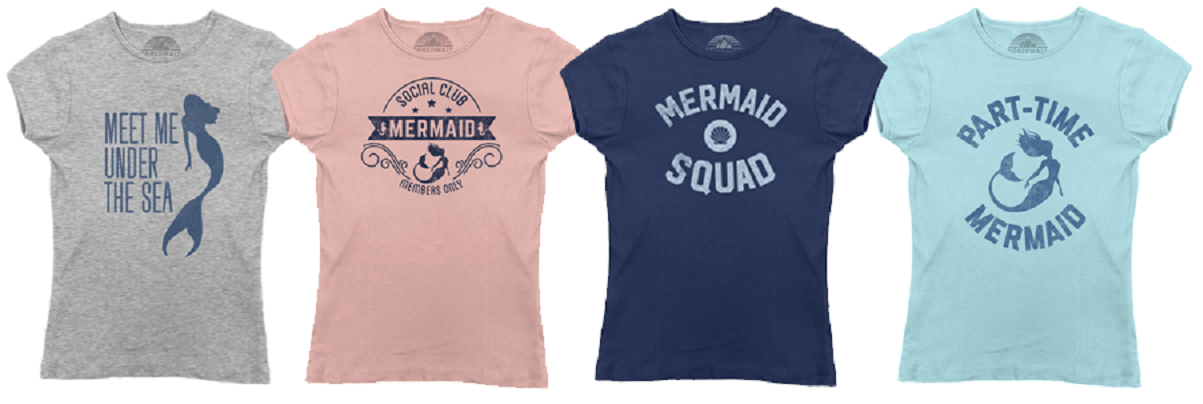
(Capitalizing on the mermaid trend via Boredwalk)
Pivoting, changing and making adjustments to stay relevant and make a shitload of sales
“I didn’t sell out, son, I brought in”
Our efforts paid off and within the first week of launching Boredwalk on Etsy we were getting orders daily and our production equipment was solidly booked.
[clickToTweet tweet=”Here’s the ONE dead simple strategy that Boredwalk used to make daily sales on Etsy from Day 1: ” quote=”Here’s the ONE dead simple strategy that Boredwalk used to make daily sales on Etsy from Day 1″]Learning to love Boredwalk was a bit of an adjustment.
We were no longer doing just the design work we felt a personal connection to, we were doing purely commercial work in the most literal sense.
It took some time to fully embrace the idea of being professional artists that create art that doesn’t interest us, but the increasingly larger paychecks certainly helped.
Boredwalk isn’t about following our creative muse.
It’s about creating a quality product that capitalizes on current trends.
It’s about paying our bills, creating a growing business that enables us to create good jobs for our employees.
It’s about delivering customers what THEY want (even if it’s not what interests us).
We’ll always have Ex-Boyfriend as an artistic outlet, but having a second line that’s more trend-oriented allows us to resist any temptation to change Ex-Boyfriend to satisfy passing trends.
Ex-Boyfriend will always make us some money, but the bulk of our income comes from Boredwalk these days.
Not being tied to our personal taste for our second line makes it easy to adapt this line to suit trends and capitalize most effectively on our design skills no matter where the fashion zeitgeist takes us.
Do you have what it takes to run a serious business?
At the end of the day, Matt and I are good at a lot of things that have nothing to do with how we feel about the design work we are doing.
We’re good at spotting, emulating and capitalizing on trends.
At our core, we’re good designers.
If you want a unicorn shirt, we’re going to create a really well-executed unicorn design, even if we have zero personal interest in unicorns.
We’ll combine just the right leading, kerning, and typefaces with graphic iconography that’s on point and screams “gotta have it!”
Whether we’re catering to a neo-grunge look or a retro athletic aesthetic, we know how to execute great design.
We’re passionate about high quality prints and know how to operate an efficient, well organized warehouse, ensuring that orders ship on time and accurately.

(Stacks of printed shirts ready to be packed up and sacks of outgoing orders waiting for USPS)
Boredwalk ultimately allowed us to take our once-home-based hobby from a spare room in our Baltimore row house to our very own busy warehouse just outside of downtown Los Angeles, where shipping companies like USPS and FedEx haul away sacks full of online orders from our premises every single weekday.
The ugly truth that comes with running your own creative business
No job is going to be perfect.
I left a career in the IT industry to do something creative alongside my partner and best friend.
Just like before, I get up every day and go into work and deal with stuff that can be annoying, stressful, and frustrating.
I deal with headaches from suppliers, counterfeiters, shipping services, etc. every week.
I don’t have a boss to answer to, but if I want to make money, the public is my boss.
[clickToTweet tweet=”‘I don’t have a boss to answer to, but if I want to make money in my biz, the public is my boss'” quote=”‘As a creative business owner, I don’t have a boss to answer to, but if I want to make money, the public is my boss’ – Meredith Erin of Boredwalk”]Whether they want to wear shirts featuring flamingos or faeries, it’s my job to make the best version of that – and that’s okay.
I get to do these things alongside my most favorite person on the planet, and I like knowing that if I do a good job I get rewarded – something I couldn’t always be sure of when I worked in the corporate world.
The holy grail of design advice for makers who want to make sales
Create your products with intention.
When I see other would-be creative entrepreneurs struggling with a lack of sales and scratching their heads as to why, I always want to ask them:
“What made you think there was a market for that? Is this something you like making, or is this something you have objective evidence of being something people want to buy?”
Most of us start off with the mistake that the stuff we like is the stuff that other people want to buy.
Some of us get lucky and that happens to be true, but it’s less common than you might think.
For the rest of us, we have to make a choice.
Do we want to be entrepreneurs or do we want to be hobbyists?
If the answer is the former, it’s time to let go of what you want to sell and start getting obsessed with answering one question:
“What do people want to buy?”
About the author:
Meredith Erin runs 2 clothing lines (Boredwalk and Ex-Boyfriend) and a print-on-demand service with her business partner and husband Matt Snow. When they’re not busy designing clothing and accessories, they’re usually busy getting creative in the kitchen, outdoors enjoying the California sunshine, or playing with their two cats.
Follow Ex-Boyfriend on Facebook, Twitter and Pinterest
Follow Boredwalk on Instagram, Tumblr, Pinterest, Twitter and Facebook
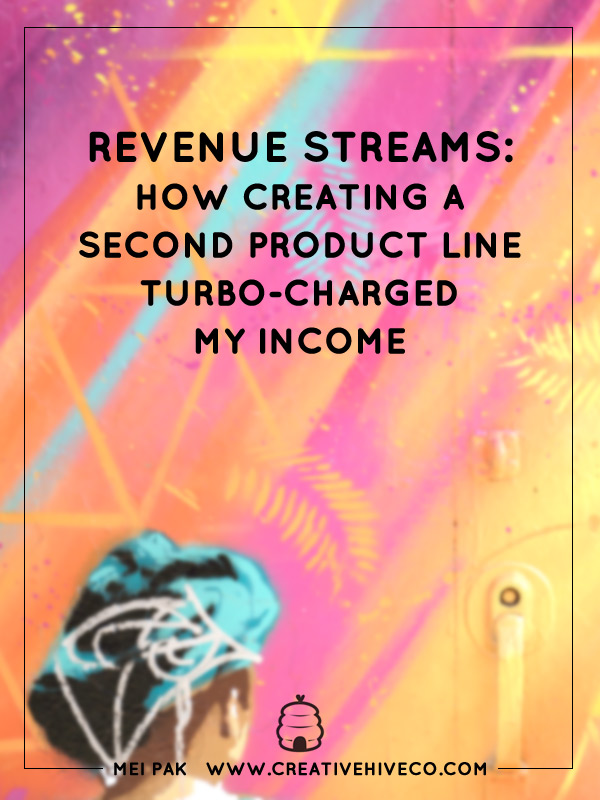
Leave a Comment
Liked this article? Share it!
Unlock a Profitable Handmade Business
in Just 12 Weeks Without Using Etsy
or Social Media
FREE WORKSHOP
This workshop is for anyone who makes and sells a handmade or physical product, including jewelry designers, artists, paper designers, bath & body product makers and more!
What You'll Discover
The #1 mistake people make with Etsy & social media that causes shops to FLOP
The secret to making it with your handmade shop so it's no longer just a hobby
How to make sales in your handmade shop with ease so you can finally get to 6-figures
TAKE ME THERE
Your email address will not be published. Required fields are marked *
Leave a Reply Cancel reply
About
Blog
A Sale A Day
Student Login
Free Class
Contact
Terms
Become A Student
Watch On YouTube
Student Reviews
See My Handmade Shop!
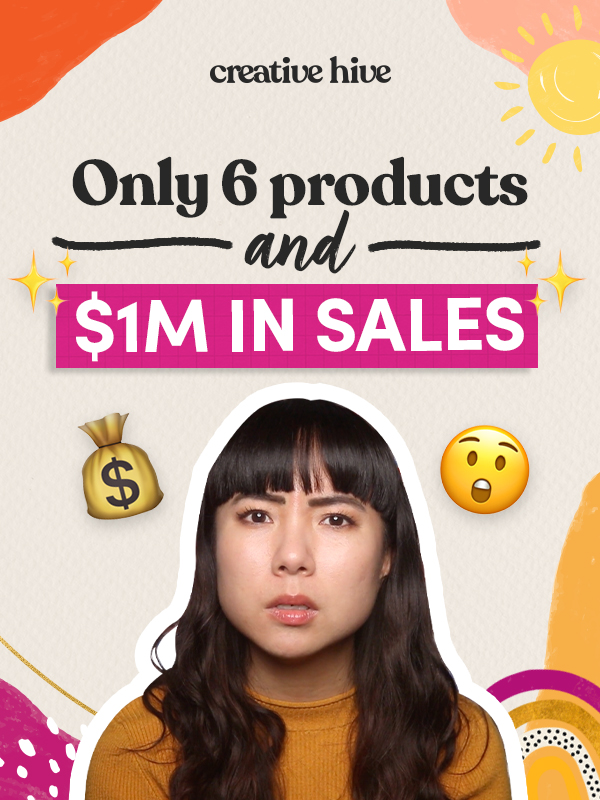
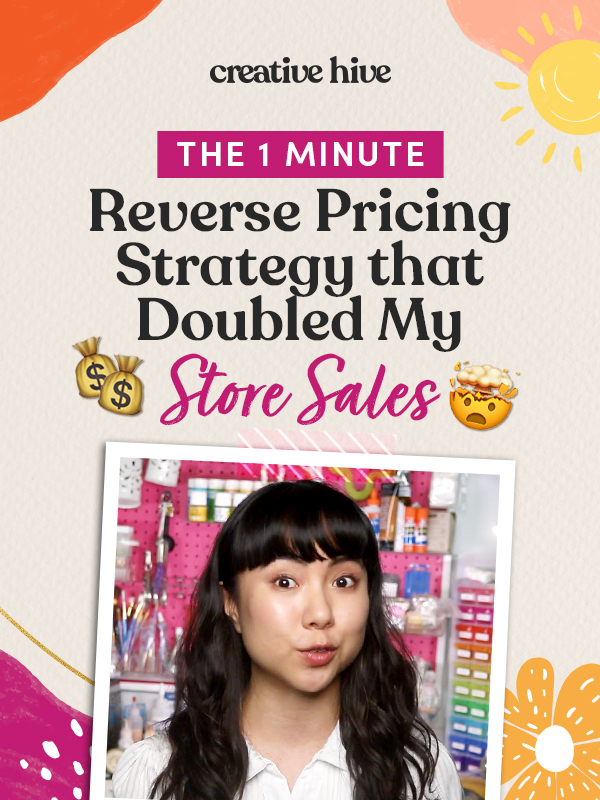
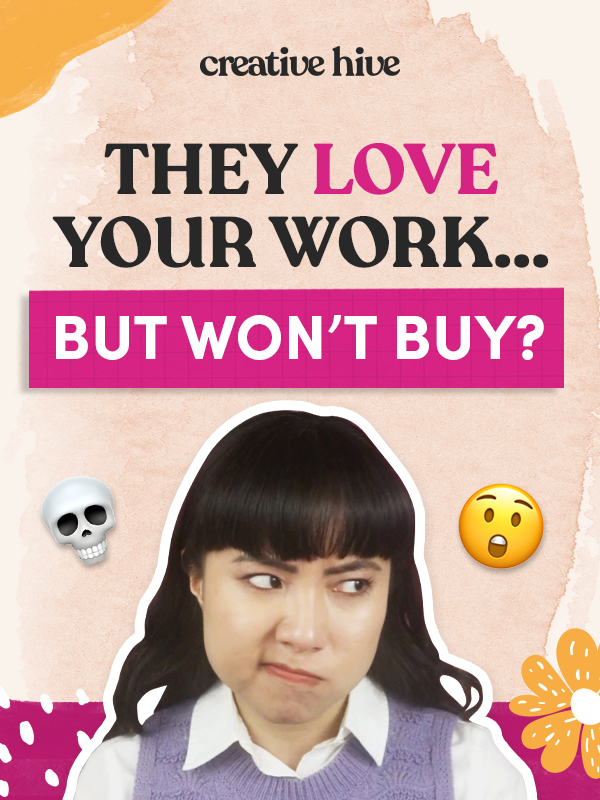
Excellent article! I had a similar experience and can testify that second products can do amazing things for your business. I saw tremendous growth with a complementary product launch. I could have done without some of the profanity in this guest post, though.
I don’t think I’ve ever met a successful creative business owner who didn’t diversify their income in some way!
Thanks for stopping by, Amy!
Turbo charge your business… by starting a new one, spending at least $20k and completely leaving your creative preferences at the door in favour of banging out massive quantities of whatever-people-want? Look – props for making life work and creating a successful business and all that, but this isn’t a realistic example of growing a business and certainly not appropriate for handmade (or ‘self-manufactured’ as this is). I know it’s only one example, but it rather sends the message that ‘handmade’ needs to be a factory to be successful and the creative muse isn’t welcome.
This wasn’t really creating a second product line, it was changing everything. All I see here is someone who ran into a problem selling what they loved and instead of solving it, chose to give up on individuality and sell whatever people wanted. Maybe I’m too cynical, maybe it’s just because it’s 4am and I haven’t gone to bed yet but in my view, this is not a happy ending.
Penny, I appreciate your perspective and thoughts on this. I think it’s important to point out that Meredith and Matt didn’t give up their creative outlets. They still run their first business, Ex-Boyfriend and they do so with lots of creative success.
Their businesses being in the t-shirt industry or the fact that they sell so many t-shirts should not be confused with being like a factory. The art that they create for the t-shirts is still their own and something they put creative thought in.
I believe that to be a successful business owner, you absolutely need to give people what they want and to listen to trends. I also believe that as a creative, it’s the best kind of creative problem solving work to find balance in creating and designing products that you love but that also meet a demand in the market.
It’s a dream to make for the sake of making without any thought as to whether or not people want it in their lives. If you’re in it to build a career, business, future and life around, it’s important to consider market demands. That doesn’t have to mean it is less creative or less handmade.
At the end of the day, it’s a choice that people have to make but it’s not a black or white matter.
I think the basic message here is that to run a profitable business, you need to sell what people want to buy. It seems very simple, but I don’t think that people understand that. Much of the time when someone posts something about not making many sales and asking for people to critique their shops, I look and see that they’re selling things that are out of fashion or just aren’t what people would buy. There’s only so much advice that you can give to people to help them sell their macramé toilet paper covers, to be blunt. The Boredwalkers did it the right way by researching what was selling and being flexible about adding products even if they weren’t their own taste. Keeping the first line as a creative outlet is great, they can do that for their own enjoyment, but to pay the bills they’re right in realizing that their boss is the public. Very smart!
You’re on point, Kara!
There are rare instances where we can truly be artists and not have a care about the rest of the world, but we need to be realistic.
If your goal is to make an income selling what you make, you need to play both roles of artist AND business person.
This article was BRILLIANT for me ! Thank-you.
At the moment I am developing a new online business to commercialise my Celtic artwork.
This has made do a complete rethink. I was being too precious about my”ART”.
It reminded me to practice what I believe . . . that unless I am actually earning my living from my “ART” , I will cannotcall myself an artist.
I am doing your 30 day challenge and it is great for keeping me on track and motivated. Thought I think I will probably go through it again next month !
Thank-you.
This story is just another version of the 3 price point strategy – they have the medium and low price, and it looks like they don’t need the high price. There’s nothing wrong with appealing to the masses. It is harder making things you may not like yourself, but you need to let go of your creativity a little bit, afterall, it is business, and business is making money.
Totally agree, Zanna! I always recommend for people to have multiple price points to diversify offerings and make it easier for people to buy.
We’ll all fall out of love with some of the work we do at some point so it’s important to have fun things in your life that aren’t tied to financial goals. I think it’s clever that Meredith and Matt have their more artistic t-shirt line. Even if it’s not making as much money, it keeps them fulfilled and sane :)